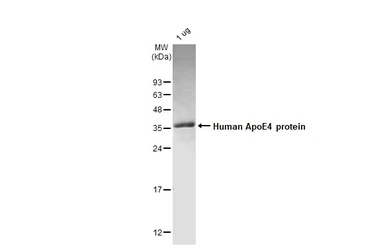Human ApoE4 protein
Cat. No. GTX136908-pro
Cat. No. GTX136908-pro
-
SpeciesHuman
Summary
APOE belongs to the apolipoprotein family and is a 299 a.a. protein with three allelic variants that give rise to the APOE 2, APOE 3, and APOE 4 isoforms. APOE is directly involved in lipoprotein metabolism and functions as a ligand for multiple receptors (e.g., the LDL receptor). These isoforms are critical for brain homeostasis and, while APOE 2 was shown to be protective in terms of Alzheimer’s disease (AD) risk, the 34.4 kDa APOE 4 isoform is a major risk factor for late-onset AD.
